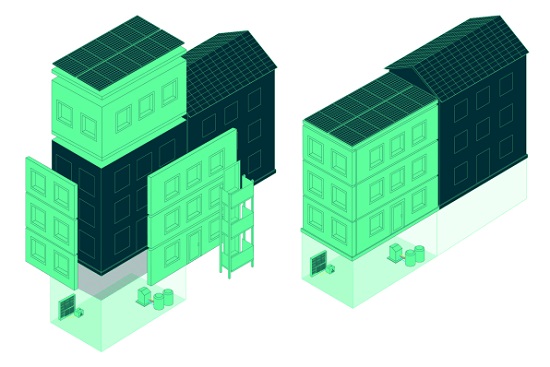 Tuesday, May 7, 2024
Tuesday, May 7, 2024  Tuesday, May 7, 2024
Tuesday, May 7, 2024 
Inside a German factory, robots assemble panels molded to fit precisely over the walls of an old apartment building like a second skin, with built-in insulation designed to help the building dramatically cut energy use. It’s part of a system aimed at solving one of the challenges of transitioning to a net-zero world: With so many outdated, inefficient buildings, which are a major source of global climate emissions, the traditional retrofitting process is painfully slow.
By one estimate, at the current rate of renovation in Europe, it would take 500 years to fully decarbonize every existing building. (The U.S. is likely moving even slower.) To avoid the worst impacts of climate change, the world needs to reach net zero no later than 2050, meaning that the world’s existing building stock needs to be transformed in less than three decades.
Ecoworks, the German startup behind the new system, starts by taking a 3D scan of an old building, both inside and out, creating a digital twin of the structure. “If you have a digital twin, you can actually automate planning, which, in a normal renovation, would take months and a lot of engineers and architects,” says founder Emanuel Heisenberg. The plans can be sent to its suppliers and a factory, where nearly everything is built in advance; each panel includes windows, ventilation, and channels for pipes. A modular roof has built-in solar panels. On site, construction workers can install a facade panel in as little as 20 minutes. Converting an entire building, including replacing fossil-powered heat, can happen in weeks, compared to the months or years needed in a project using traditional construction.
Keep reading on FastCompany.com